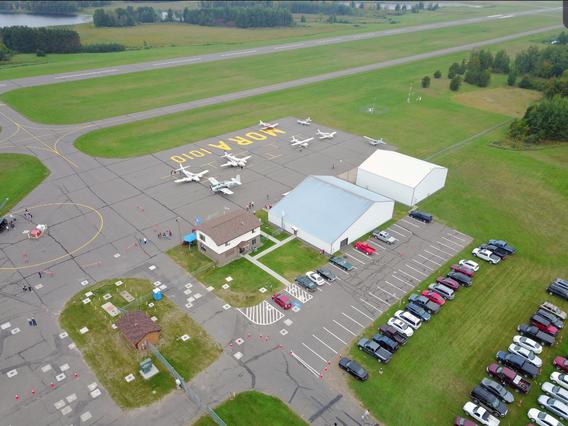
The Mora Municipal Airport, located about 70 miles north of the Minneapolis–St. Paul metro area, serves east central Minnesota. The facility has undergone a number of updates and expansions since it was constructed in 1945; it currently includes a 4,800-foot paved primary runway, parallel taxiway, and a grass crosswind runway in addition to 17 hangars housing 45 based aircraft. More than 24,000 operations occur at the airport each year, most for tourism and local recreation.
“Flying is slowly making a return to the community and we’re seeing the number of operations increasing,” says Joe Kohlgraf, who serves as the airport manager in addition to his role as the city’s public works director. The duties of airport manager transitioned from the city administrator to the public works director in June 2016.
Kohlgraf sees young people showing more interest in aviation and in wanting to become recreational pilots. “This is evident through an increase in day and half-day trips for the purpose of getting up in the air and flying,” he says.
Most of the airport’s maintenance is handled by the city’s public works staff; however, larger projects requiring significant time or expertise may be contracted, Kohlgraf explains. The city does all of the mowing, trimming, snow plowing, and yearly crack sealing.
The airport received a Project of the Year award from the Minnesota Council of Airports in 2018 for its turf crosswind runway project. Construction began in October 2016 and ended in July 2017 at a cost of nearly $1.1 million. When nominating the project for the award, the airport’s consultant, SEH, noted that the project needed to overcome significant hurdles with the environmental approval process and necessary land acquisition resulting from opposition of residents adjacent to the airport. The outcome of the new runway construction, however, was a great asset to the airport and the city and improves safety for all airport users, SEH wrote.
Kohlgraf said that with his non-flying background, he appreciated learning about the airport design and layout process. “Turf runways are far and few in this area,” he says. “There have already been a lot of pilots who normally would not fly to Mora visiting to try it out.”
Like other airports, Mora works to keep wildlife in check, particularly geese and deer. One approach it’s taking is to allow hunting on airport property with an approved permit. “The most significant challenge is getting the hunters in the right spot at the right time,” Kohlgraf says. “Year to year there seems to be a change in which animal is impacting the airport, but hunting has helped to keep the comfort level low for all animals.”
With flying becoming popular again, the airport is finding that plane storage and hangar space is in demand, Kohlgraf says. To meet that, the airport is working to identify new building areas with assistance from SEH.

